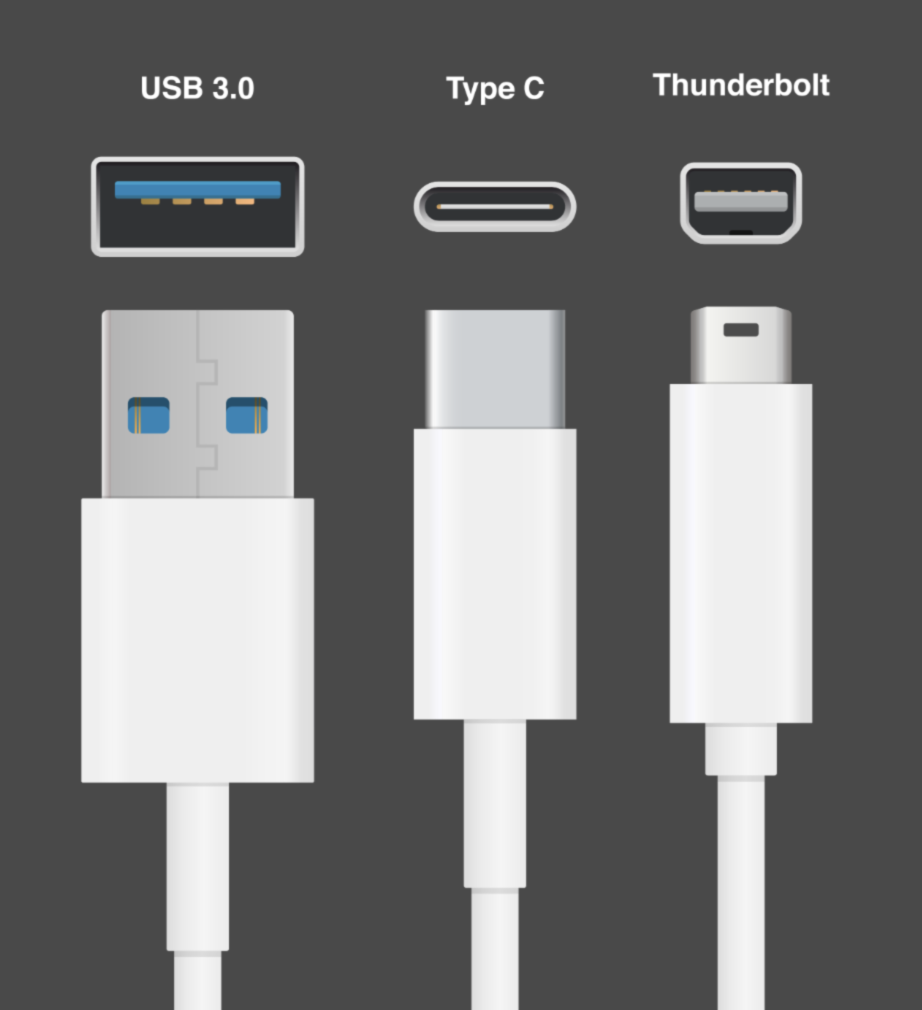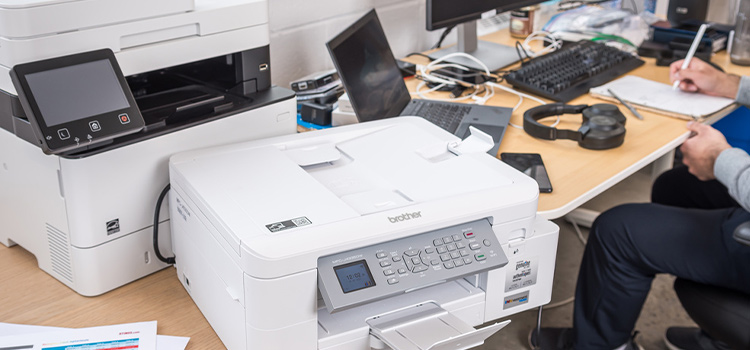Understanding USB Port Types: USB-3.0 / A, USB-C, and Thunderbolt – Which One Should You Use?
In today’s world, USB ports are crucial for connecting devices to your computer. Whether you’re transferring data, charging your phone, or plugging in peripherals like a keyboard or mouse, USB ports are the standard. However, over the years, USB technology has evolved and diversified, and there are now multiple types of USB connectors and standards. From the traditional USB-A to the newer USB-C and even Thunderbolt, choosing the right port can be confusing.

In this blog post, we will break down the differences between USB-A, USB-C, and Thunderbolt, helping you make informed decisions on which one you should use, depending on your needs.
1. USB-A: The Old Reliable
USB-A, often referred to simply as “USB,” is the rectangular, flat connector that most people are familiar with. It has been around since 1996 and has remained largely unchanged over the years. USB-A is often found on desktops, laptops, printers, external hard drives, and other peripherals.
Key Characteristics:
- Speed: USB-A typically supports USB 2.0, 3.0, and 3.1 standards. The speed of data transfer ranges from 480 Mbps (USB 2.0) to 5 Gbps (USB 3.0) or even 10 Gbps (USB 3.1).
- Compatibility: It is backward-compatible, meaning newer devices with USB 3.0/3.1 can work with older USB 2.0 devices, though at the lower speeds.
- Power Output: Provides up to 5V and 2.5W of power, which is generally fine for low-power devices like a keyboard or mouse.
When to Use USB-A:
- For older devices: USB-A is still ubiquitous on older PCs, gaming consoles, printers, etc. It’s the connector most devices will still use, and it’s common on many power adapters.
- If speed isn’t a priority: For tasks like charging a mouse, keyboard, or low-demand peripherals, USB-A is sufficient.
2. USB-C: The New Standard
USB-C is the new generation of USB ports that has been rapidly adopted in laptops, smartphones, and other consumer electronics since its introduction. Unlike USB-A, USB-C is a smaller, more compact connector that is reversible, meaning it can be plugged in either way.
Key Characteristics:
- Speed: USB-C supports much faster data transfer rates than USB-A, including USB 3.1, USB 3.2, and USB4, with speeds ranging from 10 Gbps (USB 3.1) to 40 Gbps (USB4).
- Power Output: USB-C can deliver more power, supporting up to 100W for charging laptops, smartphones, and other devices, making it ideal for high-power devices.
- Reversible: You can plug it in either way, which removes the frustration of flipping the cable.
- Versatility: USB-C can transmit data, power, and even video/audio signals (via DisplayPort or Thunderbolt) over a single cable.
When to Use USB-C:
- For modern laptops and smartphones: Many modern devices like the latest MacBooks, Dell XPS laptops, and Android smartphones now use USB-C as their main port for charging, data transfer, and display output.
- When you need fast data transfer: If you need to transfer large files quickly or use high-bandwidth peripherals like external SSDs, USB-C is the way to go.
- For charging power-hungry devices: USB-C is especially helpful when you need to charge a laptop or other high-power devices.
3. Thunderbolt: The Power User’s Choice
Thunderbolt, developed by Intel, is an advanced connectivity standard that uses the same USB-C connector, but with much higher data transfer capabilities. Thunderbolt ports can often be found in high-end laptops, workstations, and docks.
Key Characteristics:
- Speed: Thunderbolt 3 and Thunderbolt 4 can achieve speeds of up to 40 Gbps, making them the fastest USB-C-based connections available.
- Power Output: Like USB-C, Thunderbolt can deliver up to 100W of power.
- Daisy-Chaining: Thunderbolt supports the ability to daisy-chain up to six devices on a single port, allowing for the connection of multiple monitors, storage devices, and other peripherals.
- Versatility: Thunderbolt can handle data, video, and power all at once. With Thunderbolt 3 or 4, you can connect multiple 4K monitors, external GPUs, or high-speed storage devices.
When to Use Thunderbolt:
- For high-performance tasks: Thunderbolt is ideal for professionals who need to connect multiple high-speed devices, such as video editing setups, gaming, or developers working with virtual machines.
- For ultra-fast data transfer: If you’re working with extremely large files or require high-speed peripherals like RAID storage, Thunderbolt will provide unparalleled speeds.
Which One Should You Use?
Now that we understand the differences between USB-A, USB-C, and Thunderbolt, here’s a quick summary of when to use each type of port:
- USB-A: Use if you have legacy devices or low-power peripherals that don’t require fast data transfer.
- USB-C: Use if you need faster data transfer, better power delivery, or are working with modern devices like smartphones, laptops, or external drives.
- Thunderbolt: Use if you need the highest possible speeds, the ability to daisy-chain multiple devices, or connect high-performance devices like multiple 4K monitors or external GPUs.
Conclusion
Choosing the right USB port for your device and tasks is essential for maximizing your experience and performance. While USB-A is still widely used, USB-C is the future, offering versatility, faster speeds, and better power delivery. Thunderbolt, on the other hand, is for power users who need extreme performance and flexibility. Understanding these differences will help you optimize how you use your devices and ensure you’re getting the best performance out of your setup.
Subscribe to our newsletter
& plug into
the world of technology






This article was very helpful and clear. As one who’s transitioning from Windows to the Mac OS, however, a question remains. My 5-year-old Dell and all peripherals use USB-A ports. Are there adapters that will allow plugging into a Mac’s Thunderbolt ports?
Yes, you can use a USB-C to USB-A adapter to connect your older peripherals to a Mac’s Thunderbolt/USB-C ports. They’re inexpensive and widely available.